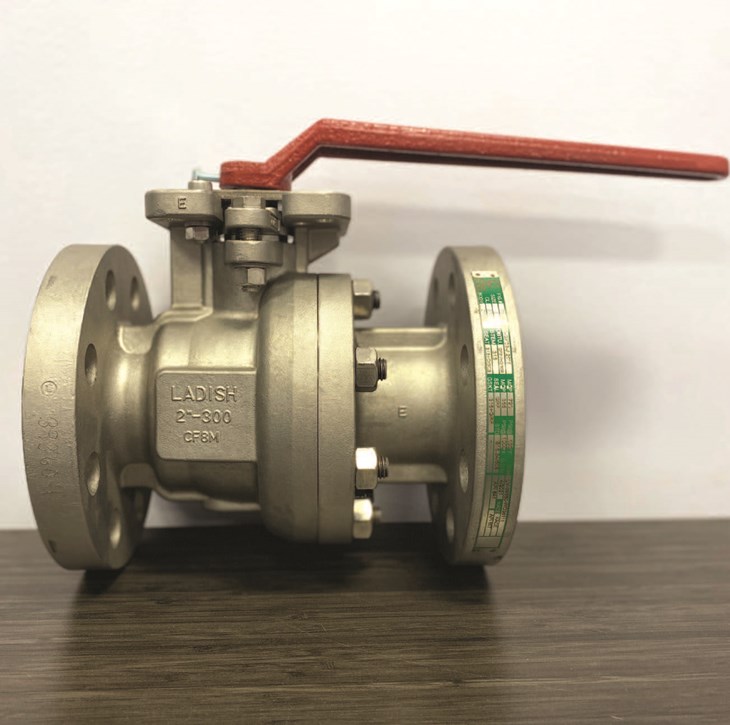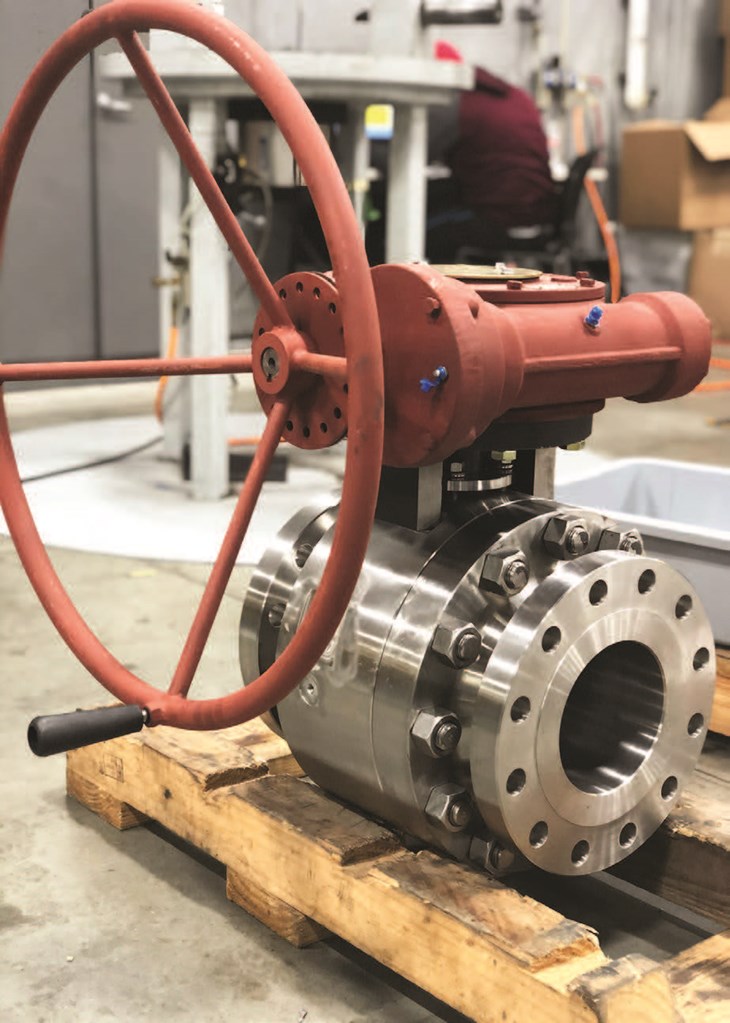However, in these facilities as well as in Solar Thermal, Geothermal, and small cogeneration facilities there are many low pressure (ASME Class 600 and below) valves in applications such as: boiler feed water, condensate, cooling water, thermal fluids, chemical feed, water wash, etc. These valves often have more complex problems due to the variable nature of the materials inside and can be very costly in terms of lost production and expensive repairs during plan shutdowns.
By Barry Hoeffner – Director of Quarter Turn Products, Ladish Valves
Issues with low pressure isolation valves can generally be broken down into three major areas:
1. Unable to operate.
2. Poor sealing.
3. Uncontrollable emissions to the environment from Packing or Seals.
While there can be many causes for the issue above, including a valve simply exceeding it’s useful life, there are a number of applications where corrosion or coating failure occurs due to poor material selection or changes in the operating conditions after the valves were initially specified. In the case of fugitive emissions, specifically, the packing and seal designs may be outdated, or were never really intended for use in a power generation environment.
Importance of Material Selection
It is very common to find low pressure valves with Carbon Steel (A216 WCB, A105, etc) bodies and Stainless Steel (316, 410, etc.) Internal parts. While this may be a good selection for the most benign conditions, there are many cases where the presence of Oxygen, salts, acids, caustic, etc. will attack the base material. If this is true, simply continuing to replace the valve ‘in kind’ with an inexpensive identical product is actually a very expensive approach; the cost of replacement is often much greater than the cost of the valve itself. If corrosion is indeed an issue, a valve with a higher alloy body or at least trim could be a more cost-effective solution.
There are currently many material options available for valves and a number of useful guides which provide cohesive direction for selecting the appropriate valves. Particularly in ball valves it is possible to ‘mix-and-match’ valve body and trim material to greatly extend the useful life of the valve in service. For example, if a system can see acidic conditions from time to time, the use of Alloy 20, Monel® or even Hastelloy® can reduce the corrosion rates significantly and are readily available. Also, if the valve utilizes some type of coating on the sealing surfaces, the better base material can extend the life of the valve and prevent the ‘sloughing’ of that coating. Experience in plants with lines that are used infrequently often benefit from alloy valve materials since many chemical compounds (cleaners, water treatment chemicals, etc.) can degrade over time and become very acidic or caustic.
It is interesting to note that many plants utilize Carbon Steel piping with no corrosion issues, but the valves in those lines can experience attack. This is generally due to the fact that the piping develops a dense surface layer that passivates the metal. As long as nothing disturbs this layer, corrosion is not much of an issue. However, there can be turbulence inside the valve that removes this layer and exposes the bare metal to corrosion. This same effect happens on the sealing surfaces of valves as the simple act of cycling the valve removes any passive layer. If this is happening, a move to a valve with a more corrosion resistant alloy will almost certainly improve reliability


Mitigating the Risk of Leaks In a recent example, a Combined-Cycle Power Plant in Texas had experienced repeated failures of small ‘Trim 12’ (Stainless Steel) Gate valves in a ‘water wash’ service. The customer reported that the gate and body was being ‘washed away’ with the valves lasting no longer than 60 days without leak-through and packing failure. After looking at the system it was realized that hot salt-rich water was flowing through the line followed by a cleaning solution. By moving to a Carbon Steel (like the pipe) ball valve with Monel Internals, PTFE Packing and TFM® seats, the valves have been working without issue for over 18 months with no sign of attack.
If the failure mode of the isolation valve is packing or seal leaks, there can again be several root causes and opportunities for improvement. The first question to be asked for valves with a history of packing leaks is whether the packing is manufactured from the correct material. It is amazing how often a valve is ordered with Teflon / PTFE packing then is used in steam service above 500oF. It may last a short time but will quickly develop a leak. Other designs are found with packing that cannot be tightened, graphite that has degraded over time, or seal material that is incompatible with the service. If packing leaks are a continuing issue, an operator should consult with the supplier or the valve manufacturer about available options. The reality is that with the cycling nature of today’s power producers, the valves are subjected to stresses and conditions not expected when the specifications were written. Packing materials, including the new API 622 certified graphite blends, are far superior to what was available in the past, and when properly applied in a good valve design, can make packing leaks a thing of the past in Low-Pressure Isolation valves.

Barry Hoeffner, Director of Quarter Turn Products at Ladish Valves has over 30 years experience in the Chemical and Refining Industries. As a Chemical Engineer, Barry brings a unique perspective to the Flow Control space. His focus for the years in the Valve Industry has been in application engineering and development of severe service and engineered ball valves.


